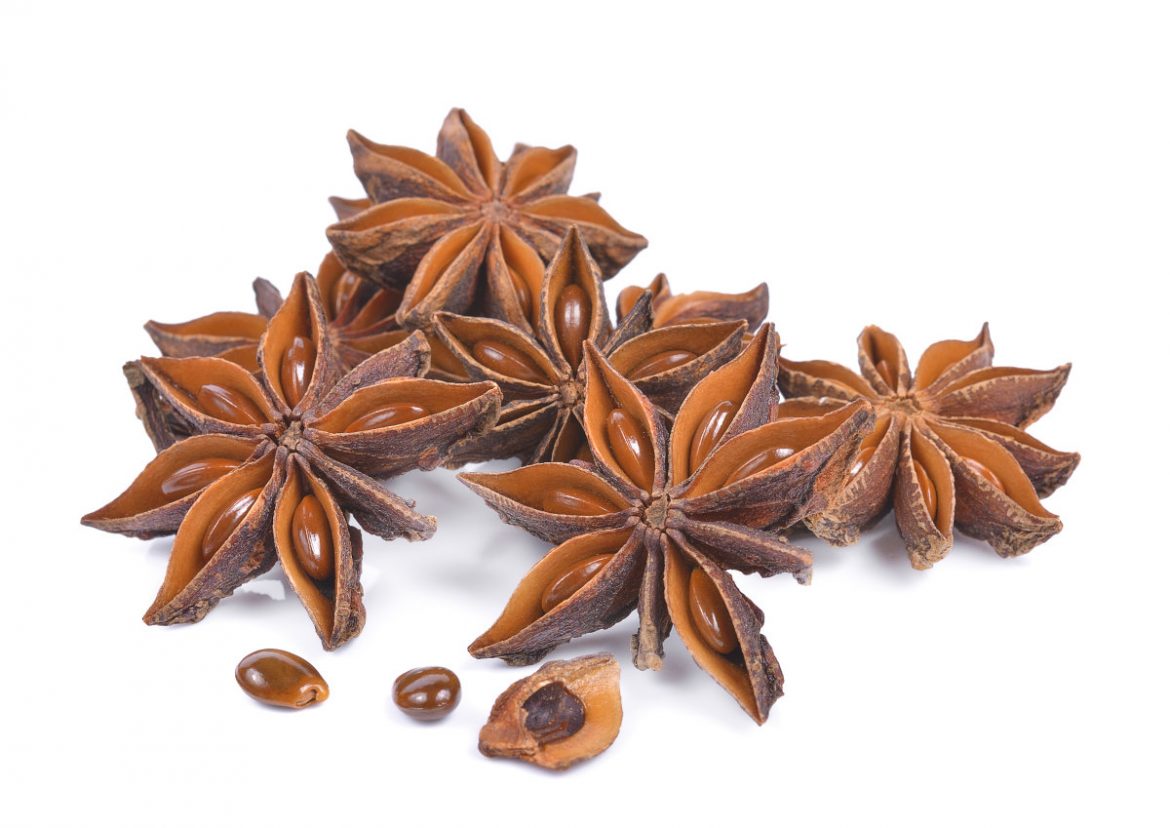Anise is a non-timber specialty forest product in China, accounting for 85% of the world’s production and planted area. Anise has been found to contain an important medicinal ingredient, shikimic acid, which is an anti-H5N1 avian influenza drug. Shikimicacid is an important component of “Duffy” and is therefore of great interest. Shikimicacid is an organic acid found in large quantities in higher plants and microorganisms. Due to the high amount of shikimic acid in the fruits of the star anise plant, the methanolic extract of star anise can contain more than 10% of shikimic acid, so it is used as a resource plant for shikimic acid extraction. Shikimic acid is a needle-like crystal, a monomer compound, weakly acidic, with a solubility of 0.18g-mL-1 in water.
At present, it is mainly extracted from star anise by leaching and extraction, and then the separation and purification process is developed according to the characteristics of shikimic acid.
Experimental scheme
Extraction
The main purpose was to extract the shikimic acid from the star anise fruit to the maximum extent. Add deionized water at 8 times the weight of the star anise, heat at a temperature not higher than 95℃, cycle the extract for 2h, and release the extract; then add 6 times the amount of deionized water, cycle the extract for 1.5h, release the second extract, and combine the extracts (because the star anise can also be used to extract fennel oil, and the extraction was done twice, so the star anise was not crushed). 2.2 Before concentrating, filter the extract with 800 mesh filter cloth, filter out the sediment, then dry or vacuum dry the extract to about 62 degrees of sugar (subject to the determination of sugar meter), release, cool, and after natural crystallization, separate the aqueous layer and the extracted oil. 2.3 Alcohol precipitation of naturally precipitated coarse shikimic acid crystals is repeatedly washed with a small amount of ethanol, left overnight, and then the library is analyzed as a junction.
After crystallization, the filtrate is filtered, and the crystals are mainly shikimic acid for the next stage. The filtrate from multiple washes is combined and concentrated, and the concentrate is reserved for re-crystallization.
Re-crystallization
The shikimic acid crystals separated by alcohol precipitation are re-dissolved in deionized water, and the pH value of the detection solution is 6-7.
Ion Exchange
The main purpose was to extract the shikimic acid from the star anise fruit to the maximum extent. Add deionized water at 8 times the weight of the star anise, heat at a temperature not higher than 95℃, cycle the extract for 2h, and release the extract; then add 6 times the amount of deionized water, cycle the extract for 1.5h, release the second extract, and combine the extracts (because the star anise can also be used to extract fennel oil, and the extraction was done twice, so the star anise was not crushed). The temperature should not exceed 100℃ or local overheating to prevent the distillation of the essential oil, which is not a problem when using the aqueous solution from anise oil producers.
Concentration
Before concentration, filter the leaching solution with 800 mesh filter cloth, filter out the sediment, and then concentrate the leaching solution by drying or vacuum drying to about 62 degrees of sugar (subject to the determination of sugar meter), release, cool, and separate the aqueous layer and crystal layer after natural crystallization.
Alcohol precipitation
The crude shikimic acid crystals were naturally precipitated and washed repeatedly with a small amount of ethanol, then left overnight, and the junction was analyzed from the library.
After crystallization, the filtrate is filtered, and the crystals are mainly shikimic acid for the next stage. The filtrate from multiple washes is combined and concentrated, and the concentrate is reserved for re-crystallization.
Elution
A glacial acetic acid solution (pH 10) with a concentration of 10% is prepared to elute shikimic acid from the ion exchange resin, and when a weak acidity is detected in the effluent, the eluent is received. After adding the glacial acetic acid solution, rinse the resin with deionized water to remove all the acid until the eluent is detected to be neutral and then stop.
Concentration
Concentrate the eluate, recover glacial acetic acid, and then release shikimic acid solution and cool it.
Resin decolorization
In order to remove the pigment from the shikimic acid solution, resin adsorption and decolorization of the above solution is also required. The macroporous adsorption resin is mainly used to remove the pigment from the solution. When the effluent is weakly acidic, the liquid is received. After the shikimic acid solution, rinse it with deionized water to neutral, and then stop watering and receiving liquid.
Concentration and precipitation
Concentrate the decolorizing solution to a sugar level of 60 degrees, release it, and cool it at 0~5°C for crystallization. When precrystallizing, add crystals as needed.
Filtration and Drying
Shikimic acid can be obtained by separating the crystals by vacuum filtration and vacuum drying.
Resin regeneration
The ion exchange resin and the adsorption resin are regenerated after each use. The specific method is to soak them in 10% NaOH solution or HCl solution for 12h and then wash them with deionized water for the next use.
Product Quality
The shikimic acid produced by this process ensures the quality of the product, as the whole process uses food grade excipients (ethanol, acetic acid) and no other contamination is introduced into the production process. The sample was dissolved in 0.1g of methanol and detected by Hewlett-Packard HP1050 liquid chromatography:
- Chromatographic column: ZORBAXNH2 (5 μm, 4.6 mm×150 mm);
- Mobile phase:acetonitrile-2%H3PO4 (95∶5);
- Injection: 5μm; Flow rate: 1ml-min-1;
- The detection wavelength was 213nm, with a bandwidth of 4nm; the reference length was 300nm, with a bandwidth of 80nm.
The results were as high as 99.3% by chromatography-normalization, which reached the pharmaceutical grade standard.

